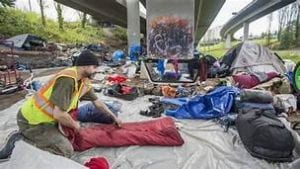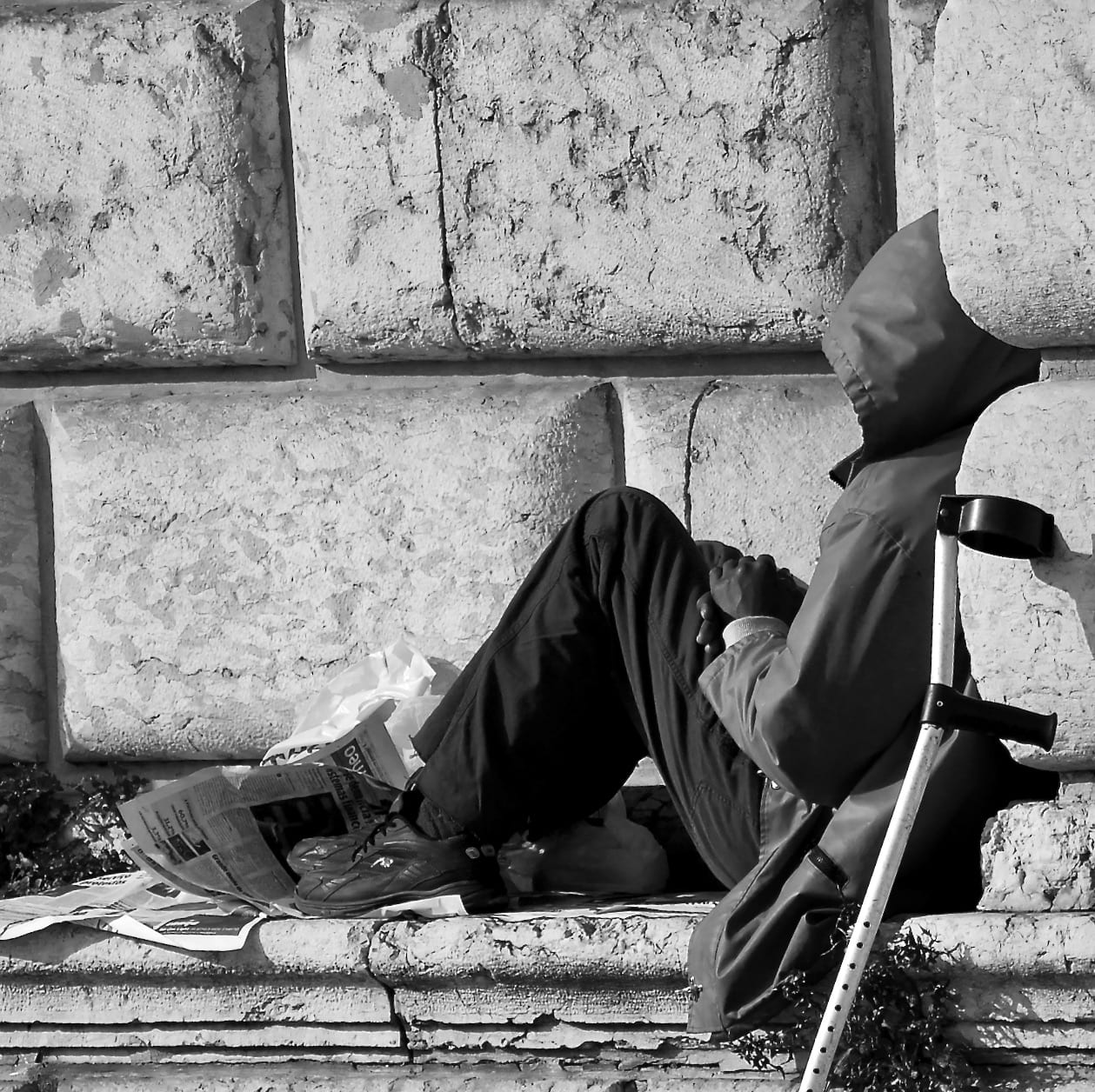
The homeless population in America tends to be neglected by the society they live in. They are among the most vulnerable, belonging to already marginalized communities that struggle to meet their day to day needs. As a result, the unhoused have little to no power or influence on social norms and affairs. As someone who has experienced homelessness both in India and in America, I have come to distinguish some of the common misconceptions society holds about the unhoused population. There are a lot of stereotypes and social stigma that surrounds the discussions around homelessness, which often blames the victims of systemic issues, instead of restructuring the conversation around how we as society can best help these marginalized groups realize their basic human rights to shelter. In order to do so, we must first understand what it really means to be homeless in America.
History of Homelessness in America
Homelessness is not an issue unique to the United States, as it can be found in countries all over the world. While homelessness in America can be found as early as the colonial times, modern homelessness rose as a response to the Great Depression, where people experienced high levels of unemployment and poverty. Especially interesting is the relationship between the growth of urban cities and the rise in homelessness. Coupled with low-wages and higher costs of living, people found it more expensive to find places to live in urban centers, such as New York and California. The aftermath of the Great Depression put a lot of people in desperate need of employment, and as the economy took to the service industry, more and more undereducated, impoverished people had no other choice but to turn to these low-income jobs. The country’s shift to a service economy meant that laborers were now being paid lower wages, leaving service industry employees unable to afford the rising costs of housing. Coupled with higher housing costs and lower wages, when people turned to social welfare programs, they found these programs to be lacking in funds as well.
Additionally, there was a campaign to “Deinstitutionalize” people held in mental asylums. While the campaign itself was well-intended, its applications were lacking in structure, and instead of providing patients with proper access to mental health resources, people with mental disabilities were released to fend for themselves. The neglect of these institutions led to the increasing numbers of mental health patients facing housing insecurity. To make matters worse, gentrification policies (made to bring in wealthy real-estate investors and high-income residents to underdeveloped parts of the city) led to the displacement of many low-income families, putting them out of their homes. These policies disproportionately affect people of color, something that has forced many marginalized communities to fall prey to an endless cycle of poverty and degradation.
Unfortunately, one of the most concerning additions to the homeless population is the disproportionate number of youths that identify as being part of the LGBTQ+ community. According to a recent study conducted by Chapin Hall at the University of Chicago, LGBTQ+ youth had a 120% higher risk of experiencing homelessness. These members who already belong to an ostracized community can become more vulnerable to harassment, violence and hate crimes.
Additionally, unable to find jobs after returning home from military service, many veterans end up homeless with nowhere else to go. Although places do exist to support veterans who experience homelessness, many are either unaware of the resources at hand, or too ashamed to use these resources. As a result of the social stigma surrounding the topic, people experiencing homelessness often become withdrawn from society.
Society’s Attitudes Toward the Homeless

Homelessness is received with wildly different attitudes among different cultures. America is a very diverse country, with people that share hundreds of different cultures and traditions, and these cultural attitudes can carry over in the way they respond to contemporary social issues. Different cultures share a varying definition of what a “home” means, and even more distinctions in their approach toward people experiencing homelessness. What the dominant White culture might consider to be a home, (an individual unit of space for nuclear families), might not be what someone who belongs to the Indigenous population believes. They might argue that a home is where you can interact with your community, a place to feel safe and share with friends and family. Even the attitudes toward helping people who are unhoused have strict cultural implications. As described in Islam, it is part of the every-day religious ritual of a Muslim to give alms and help the poor in their community. In Hinduism, while helping the poor with food and shelter is allowed, certain castes are not allowed to eat alongside with or sit beside people of lower castes. People experiencing homelessness have their own unique culture, where certain skills or strategies for survival on the streets are shared amongst each other.
Along with all these complexities, the unhoused also undergo various types of stigmas, including social stigma, and cultural stigma. Social stigma can be discrimination and harassment directed toward the homeless population by the institutions, systems and people that make up society. Cultural stigma can refer to the stigma expressed by friends and family members or other religious or cultural institutions that may shame and blame the victims for being homeless.
Unhoused people also have a hard time finding employment. This is partly due to the fact that the job application requires a home address for the application process to be completed. As a result, people who are dispossessed also experience difficulties when finding housing. The applications for apartments include a proof of income/employment section and applying for government housing takes months to be processed and reviewed. Many states have long and complicated application processes, and even then, it is not a guaranteed housing option. Nevertheless, applicants can be denied, and they would still need a place to stay while awaiting their application to be approved.
Adding to these difficulties, people in the homeless community are constantly harassed with wild stares or abuse, (both verbal and physical), from members of society. The law enforcement agency, an institution designed to serve and protect people of the community, may make matters worse by deteriorating the situation further. Without proper training, police approach the homeless defensively, ready to attack at the slightest “abnormal” reactions. What they haven’t been trained to realize is that many people experiencing homelessness are also at high-risk of developing mental health issues due to the stress and realities of being homeless. These altercations can turn deadly, and unfortunately, many people of the homeless community have either been locked up or even killed by officers of the law. Many of these instances were even caught on camera, yet these officers faced little to no accountability or legal punishment.
People experiencing homelessness are also easy targets to getting their possessions robbed, and many times, police will raid their camps and confiscate what few belongings they might acquire, including sleeping tents and toiletries. Society also treats the homeless population as a burden and blames them for being “lazy” or “druggies” or “criminals/suspicious,” without any provocation from the homeless community. It can be especially insulting for the people experiencing homelessness to be judged for their situation while society simultaneously fails to criticize the state’s inability to protect peoples’ fundamental human rights to food, shelter, and other basic needs.
The Legal Response to Homelessness in America

The legal response to the homelessness crisis in America has not been a heartwarming one either. Urban cities all over the United States have put in place anti-homelessness measures, otherwise known as hostile architecture. These include slanted benches, benches divided by armrests, spiked and rocky pavements to prevent people from sleeping there, and even boulders under bridges. Not only are these measures inhumane, they also cost the tax-payers a lot of money. These atrocious tactics are put in place to discourage homelessness, attempting to connect rising numbers of homelessness to increased crime rates. As recently as July of this year, Los Angeles even went so far as to make homelessness downright illegal, restricting homeless encampments in majority of the city. The city has even prohibited the homeless from sitting, sleeping, or laying in public. Due to the fact that homelessness overwhelmingly affects people who belong to already marginalized communities, a rights-based approach is necessary, one that addresses the existing systemic issues which need to be fixed first.
Covid-19 and How it Continues to Impact the Homeless Population

The Covid-19 pandemic continues to impact many different communities in a variety of ways. The pandemic hit especially hard among the homeless population, where access to hygienic products are often slim, if not non-existent. People experiencing homelessness may not have the ability to continuously wash and sanitize their hands, with limited access to clean water and soap products. They also been experience complications with social distancing measures, forced to be in crowded spaces like homeless shelters, which has only increased their risks of getting infected. Furthermore, even when infected, or exposed to the disease, the homeless population has very limited ability to quarantine, further allowing the spread of the disease to others in close proximity. The unhoused population has limited access to healthcare and medicinal treatments, and many are already immunocompromised or have pre-existing conditions, which increases their vulnerability of catching the disease. Stereotypes geared toward the homeless population labeling them as “junkies” or “druggies” has influenced the care they receive, leading to many cases of misdiagnoses or mistreatment as a result of biases held by healthcare professionals and others in the health care industry. Due to the rise in unemployment numbers during the economic shutdown as a response to the pandemic, millions of people who did not qualify for unemployment benefits, and could not make ends meet, also became homeless as a result.
Some Successful Approaches to Ending Homelessness

There have been some successful attempts at ending homelessness in America as well as in other nations. Utah attempted to decrease its rates of homelessness back in 2015, which successfully reduced its homelessness by 91%. They executed a policy known as “Housing First,” which gave their chronically homeless populations free housing, a decision that cost the state less money than alternative anti-homelessness measures. This program unfortunately has not been a complete success, as people experiencing homelessness in other states have been migrating to Utah, making it too expensive for Utah alone to pay for the country’s increasing homelessness crisis. A national policy, on the other hand, that could implement the Housing First approach taken by Utah, may be the easiest, and essentially cheapest option to ending the homelessness crisis in America. This is essentially what Finland did. In 2019, Finland approached the homelessness issue with the most obvious of answers, by providing housing for all those who are unhoused. Like Utah, they applied the “Housing First” policy, (which came with no strings attached), recognizing that housing is an essential human right that should be protected and promoted. They also understand that in the long run, providing the homeless population with housing is the cheaper option to society. Also, as examined earlier, if applied in America, this Housing First policy will inevitably save more lives, with fewer interactions between the homeless and the police.
While homelessness is not something people are normally born into, the unhoused face discrimination, stigmatization, and marginalization from society just as much as any other group. Although people’s socioeconomic status is a major factor in determining who is most vulnerable to experiencing homelessness, as we’ve seen in the case of the LGBTQ+ youth, and older veterans as well, homelessness can impact people of any and all races, at various age levels, and at any given time. The pandemic itself has expanded the homeless population as people are unable to pay their backed-up rent or mortgage payments. While alternative approaches can assist to eradicate levels of homelessness in our society as implemented in Finland and Utah, it is crucial that we also continue to destigmatize being homeless in American society and take a rights-based approach to finding long-term solutions to end their suffering.




